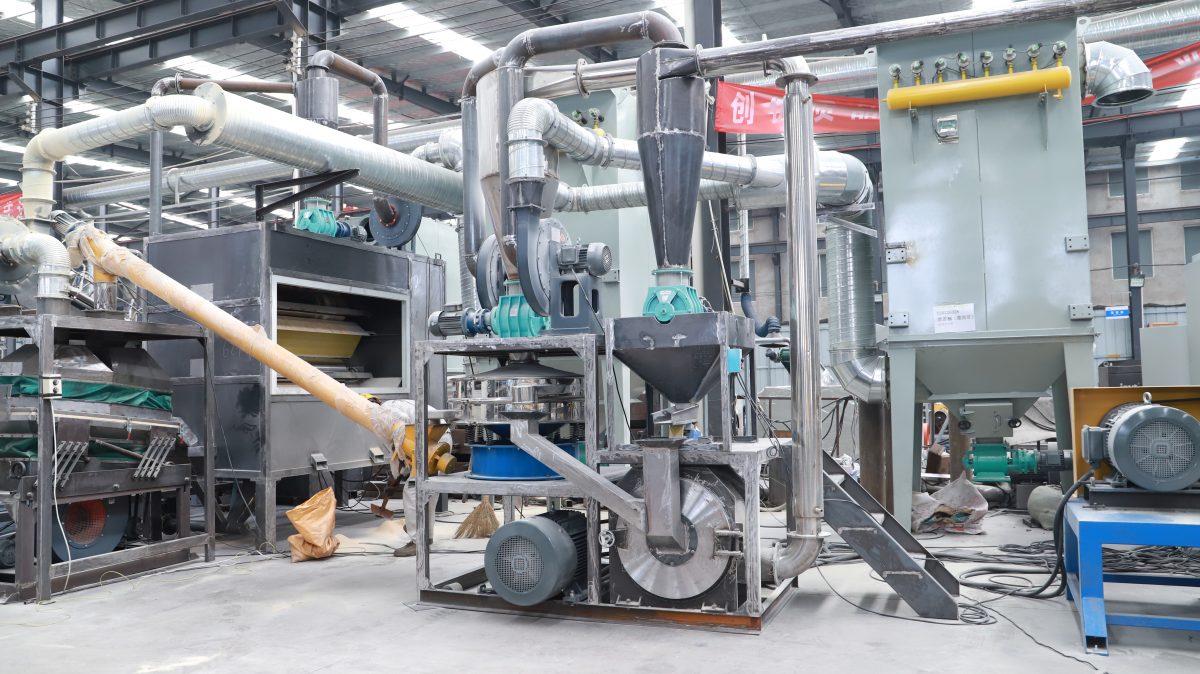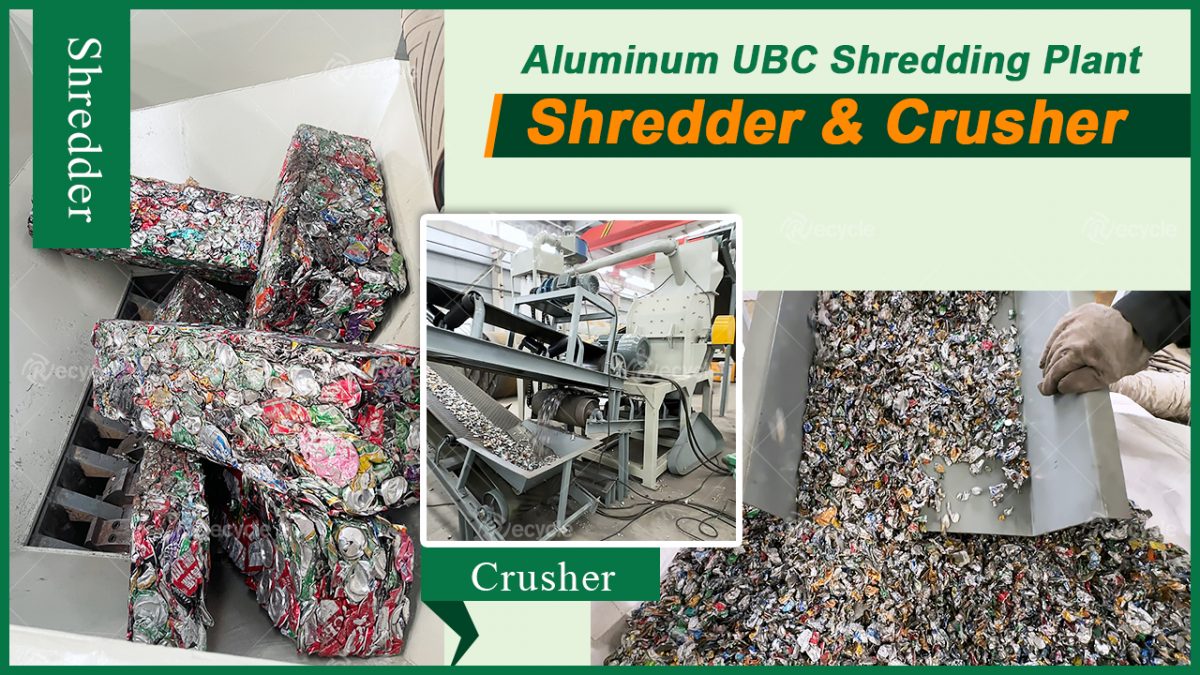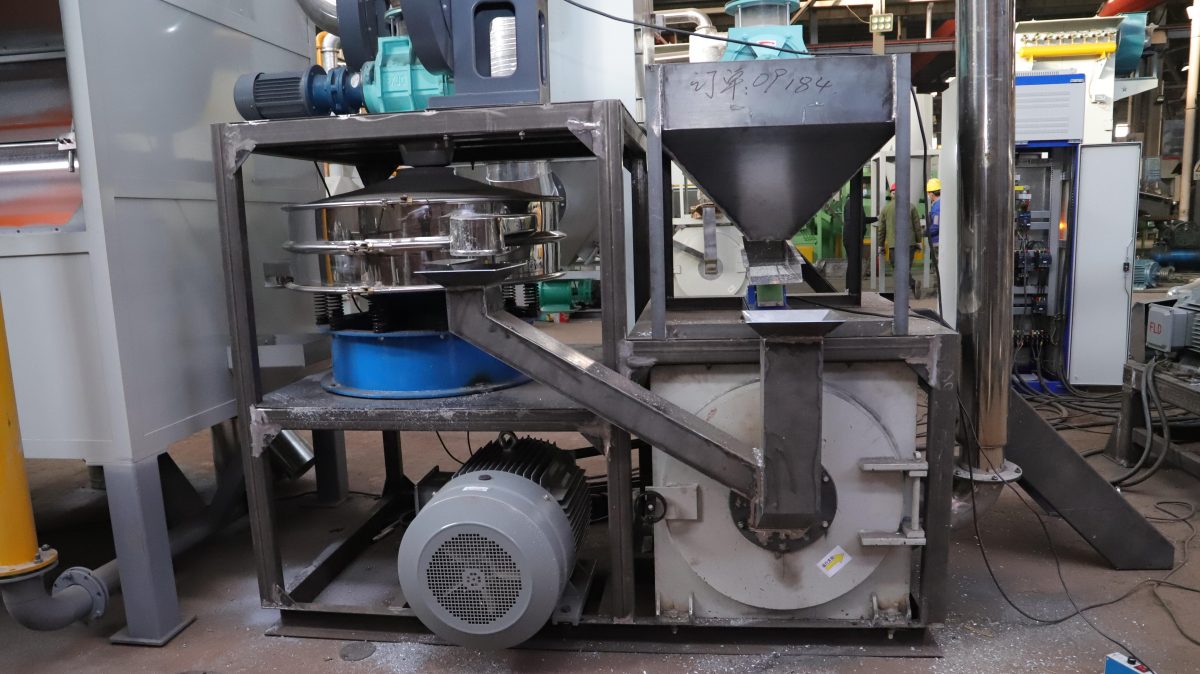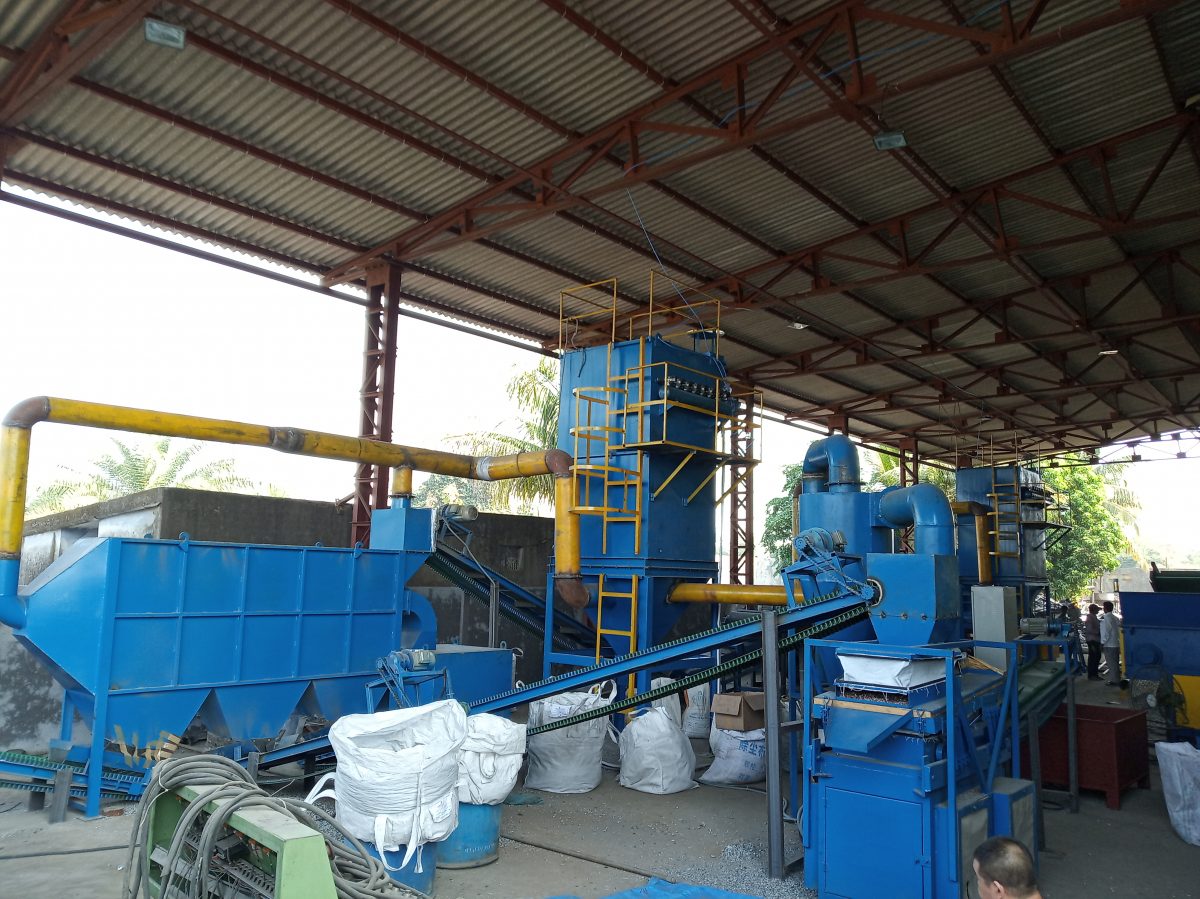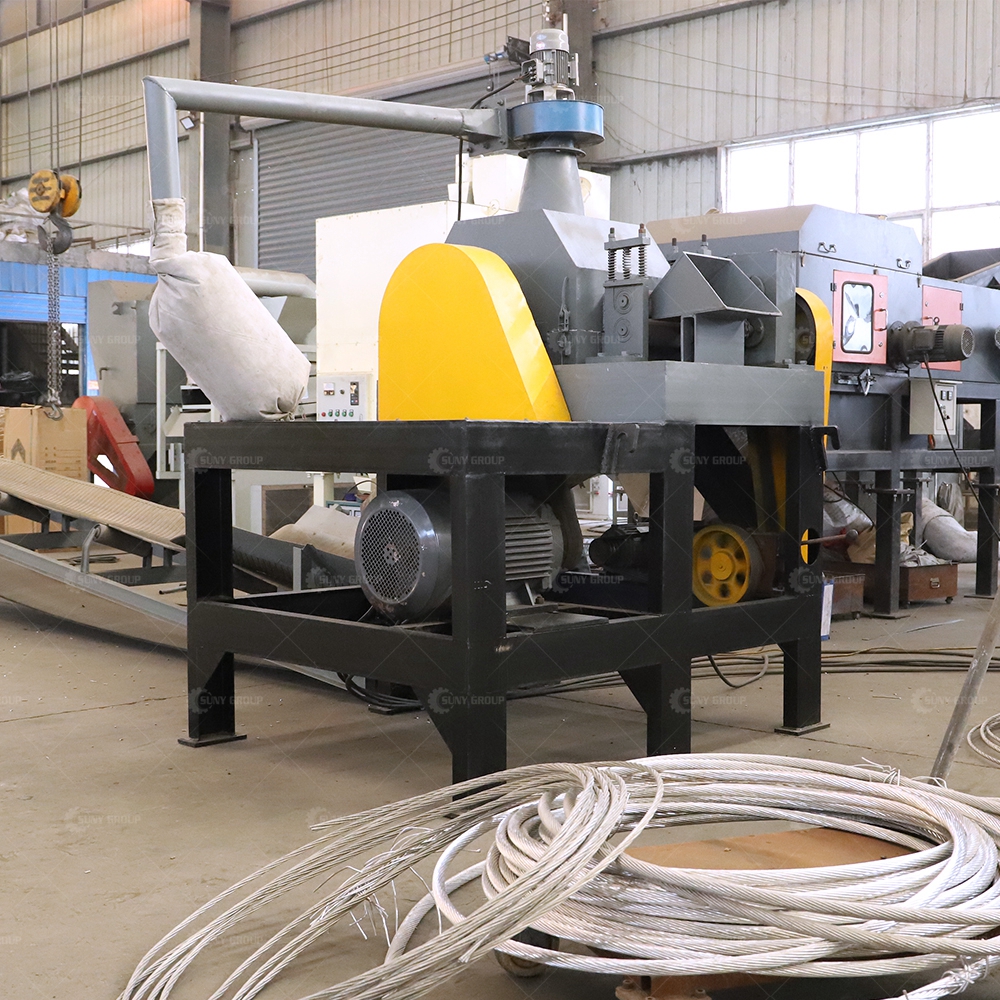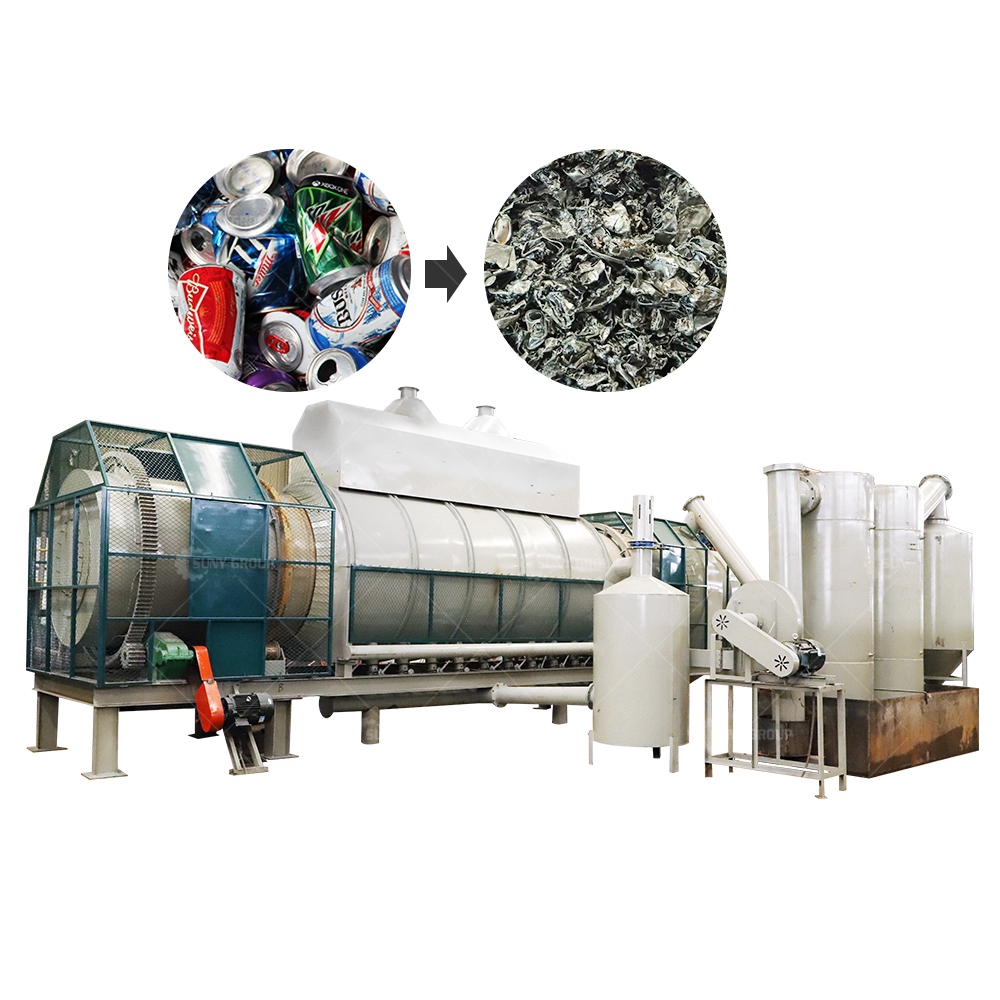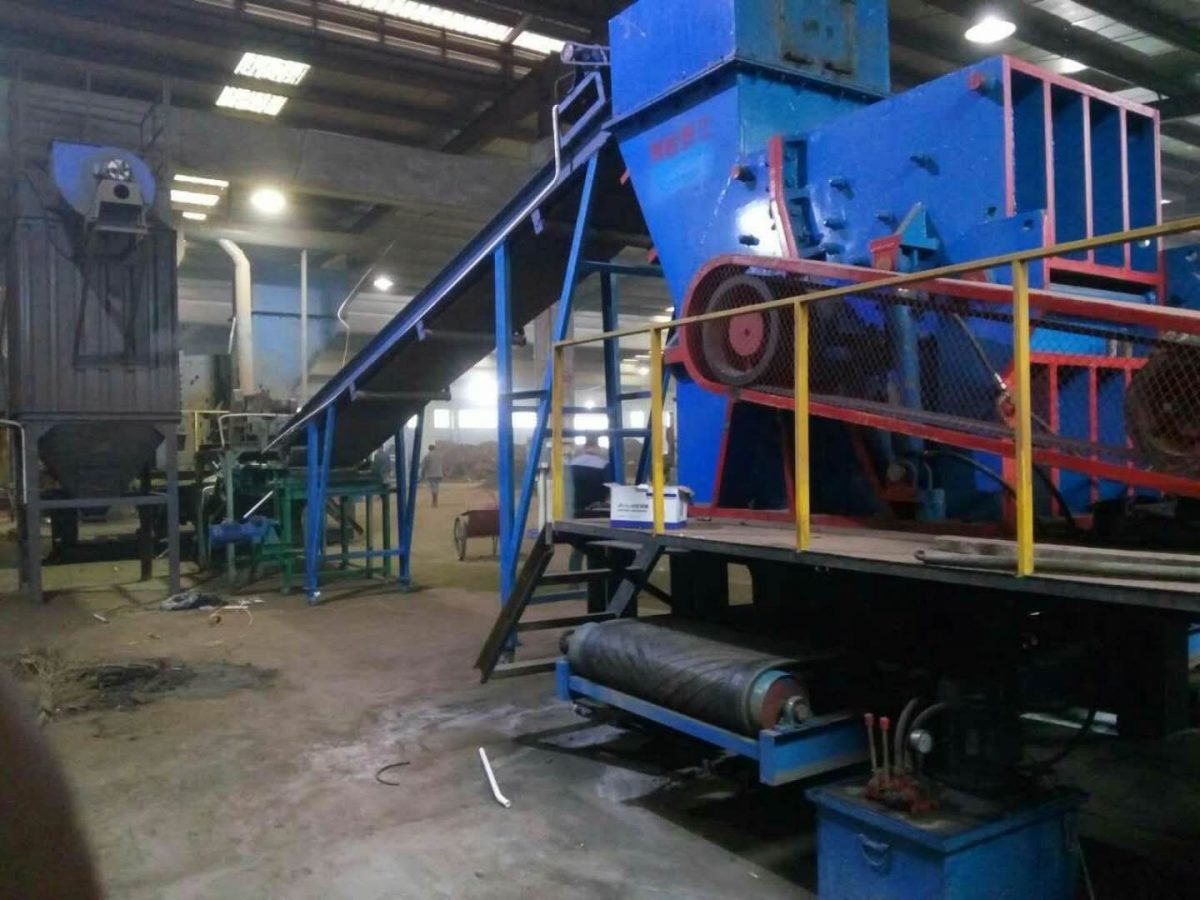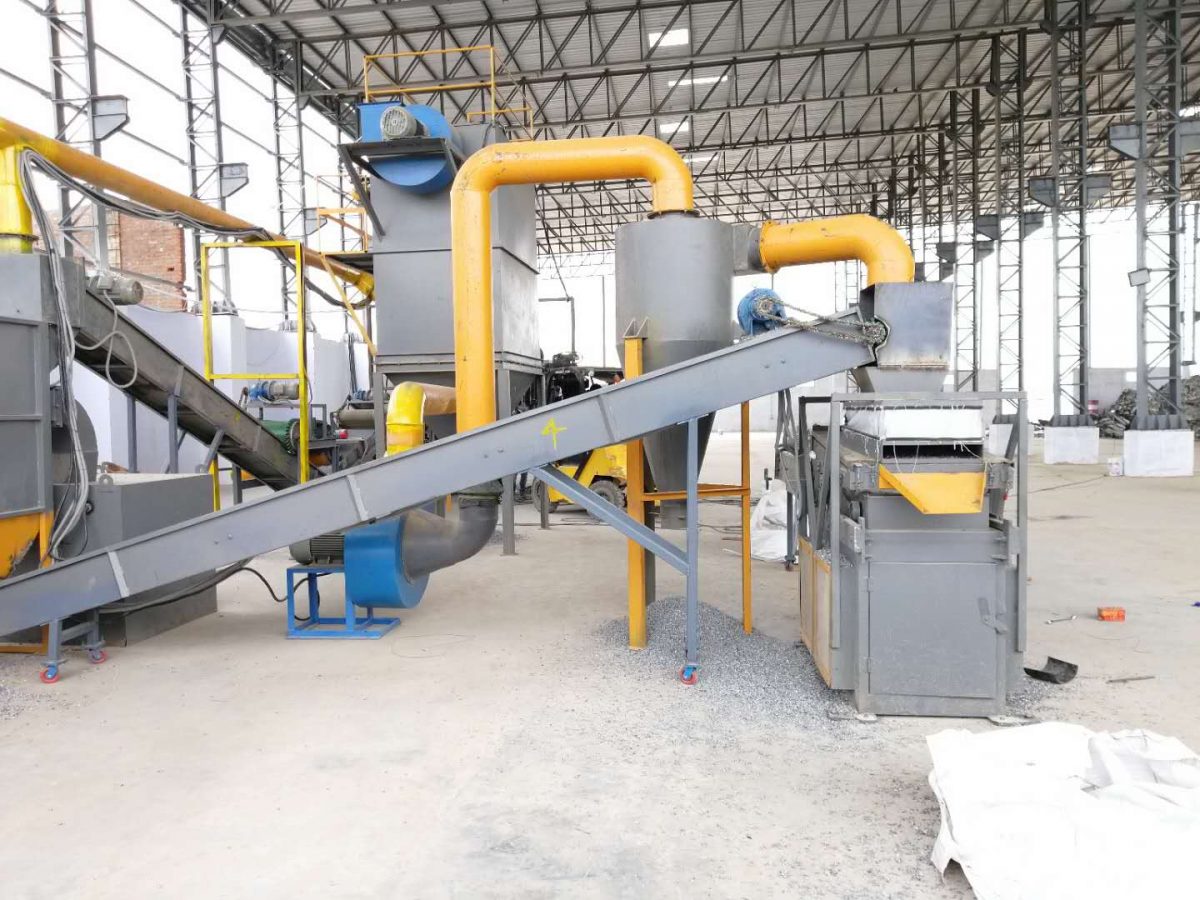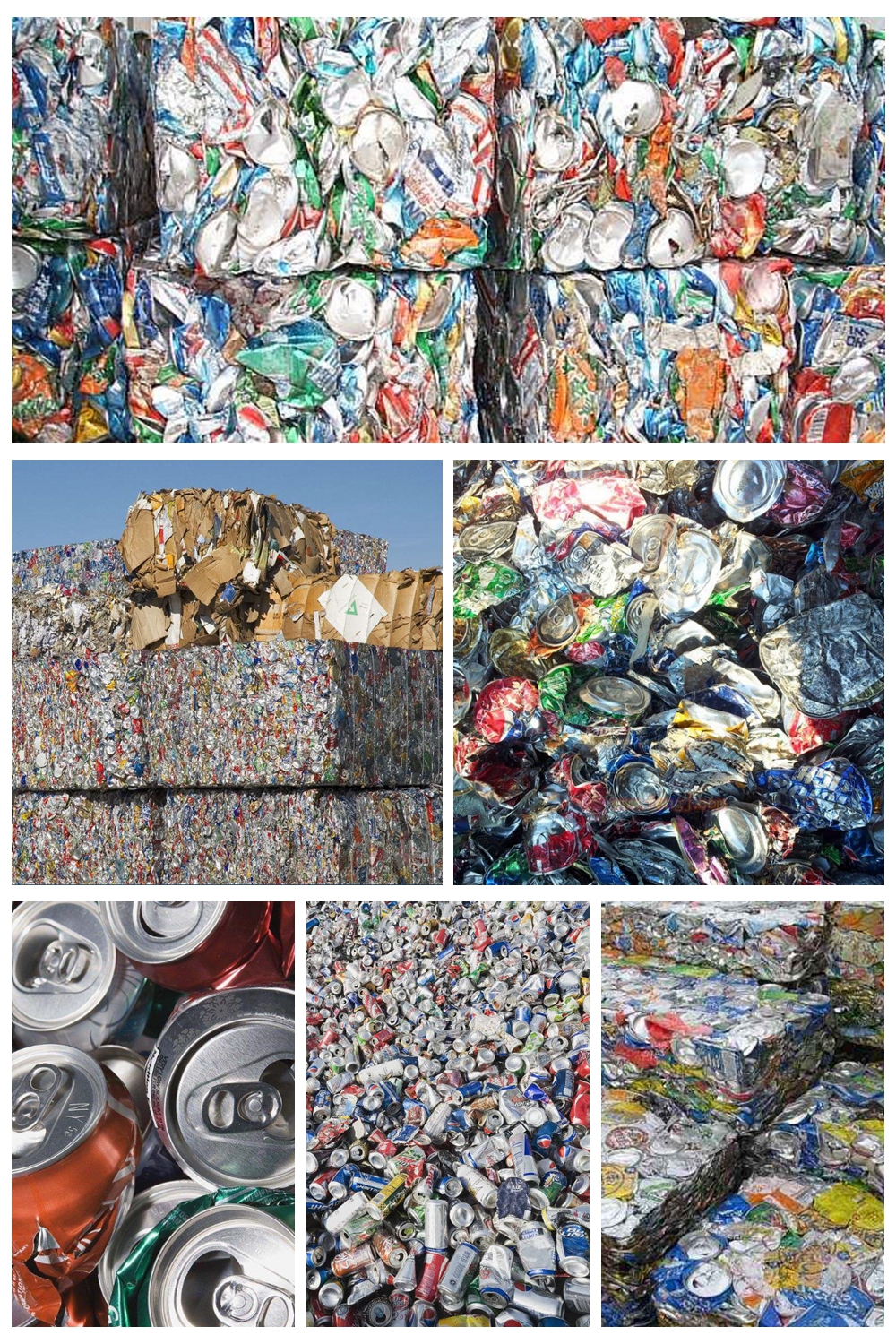A variety of equipment is needed in the scrap aluminum recycling process, and these equipment work together to improve recycling efficiency and environmental protection level. The following are some of the main scrap aluminum recycling equipment:
Scrap aluminum crusher: This is an important pre-treatment equipment that can efficiently crush various scrap aluminum materials, such as scrap aluminum alloy, scrap aluminum sheet, scrap aluminum profile, scrap aluminum wire, scrap aluminum cans, etc. The crushed scrap aluminum is easier to classify, sort and smelt, which provides convenience for subsequent processing.
Aluminum fume treatment equipment: In the scrap aluminum recycling process, especially in the smelting stage, a large amount of fume will be generated. These fumes not only pollute the environment, but also may cause harm to human health. Therefore, it is necessary to install aluminum fume treatment equipment, such as cyclone separators, electrostatic precipitators, wet dust collectors, etc., to effectively filter out the fume and protect the environment.
Scrap aluminum smelting equipment: This is one of the key equipment for recycling scrap aluminum alloys, mainly electric furnaces, gas furnaces, heavy oil furnaces, etc. These equipment can melt the scrap aluminum alloy, separate aluminum and other impurities, and provide a basis for subsequent sorting and processing.
Scrap aluminum sorting equipment: Scrap aluminum sorting equipment can classify scrap aluminum alloy according to different types, which provides convenience for subsequent processing. Common scrap aluminum sorting equipment includes vibrating screens, airflow sorters, magnetic separators, etc., which can separate scrap aluminum according to its particle size, density, magnetism and other characteristics.
Scrap aluminum processing equipment: Scrap aluminum after smelting and sorting needs to be further processed into aluminum materials of various shapes. At this time, scrap aluminum processing equipment such as calenders, stretchers, deep punching machines, etc. are needed. These equipment can process scrap aluminum alloys into aluminum materials of various specifications to meet the needs of different fields.
In addition, depending on the type of scrap aluminum and the recycling process, other auxiliary equipment may also be required, such as metal briquetting machines, balers, conveyors, etc. These equipment play an important role in the scrap aluminum recycling process, improving the recycling efficiency and automation level.
Scrap aluminum recycling requires a series of equipment to work together, including scrap aluminum crushers, aluminum fume treatment equipment, scrap aluminum smelting equipment, scrap aluminum sorting equipment and scrap aluminum processing equipment. The use of these equipment not only improves recycling efficiency, but also achieves the goals of environmental protection and resource conservation.
